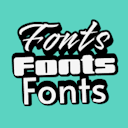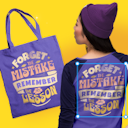Product
Templates
Resources
Company
Home
Blog
Tutorials
Album Cover Ideas and Step-by-Step Guide
Album Cover Ideas and Step-by-Step Guide
Welcome to this step-by-step guide on how to create captivating album cover art using graphic design tools to set the tone for your music and showcase your unique brand identity to your audience. We'll cover everything from ideation and theme selection to choosing fonts, imagery, and color palettes. Let's dive into the world of album cover design with graphic design guidance from Graham!
Step-by-step video guide for making album cover art in Kittl
In this video tutorial, Graham shows a step-by-step process for making album cover art in Kittl! He shares tips on how to achieve different album cover styles and aesthetics, from using photography and colors to typography.
Why is album cover art important?
A great cover grabs attention and can intrigue people that might otherwise overlook your album.
”What should be on an album cover?
Wondering what should even be on your album cover? Here’s a list of the essential design elements you should include on your album design.
- Album Title: The name of the album should be prominently displayed.
- Artist Name: The name of the artist or band should be clearly visible.
- Imagery: This includes photos, illustrations, or graphics that represent the theme, mood, or message of the album.
- Typography: The font styles and arrangements used for the text should complement the overall design and genre.
- Color Palette: A cohesive set of colors that reflect the tone and style of the music.
- Logo: If the artist or band has a logo, it should be included for brand recognition.
- Visual Theme: The overall aesthetic that ties all elements together, representing the music's genre and mood.
- Explicit Content Warning: If applicable, an advisory label indicating explicit content.
- Record Label Logo: Often included for branding and identification purposes.
- Release Date: Sometimes featured for promotional covers or special editions.
Steps to design your album cover art
Getting Started: Ideation
Before diving into the design process, it's essential to brainstorm and gather inspiration. Start by listening to the music you're creating the album cover for and analyse the emotions and messages it conveys. Consider the following questions:
- What genre is the music?
- What mood or atmosphere do you want to evoke?
- Are there any specific symbols or imagery associated with the music?
Look at existing album covers in your genre for inspiration.
Kittl Tip: Create a mood board with various references, including photography, illustrations, and design elements that resonate with your music's theme.
Choosing a Theme
Once you've gathered your ideas, it's time to choose a central theme for your album cover. Your theme should reflect the essence of your music and brand identity. For example:
- A rock album might feature bold, gritty visuals.
- An indie album could incorporate minimalist, artistic elements.
- A pop album might use vibrant, energetic colors and playful imagery.
Think about how you want your audience to feel when they see your album cover and let that guide your theme selection.
Fonts
Typography plays a crucial role in album cover design. The font you choose should complement your theme and be legible at various sizes. Here are some tips for selecting the right fonts:
- Match the font style to your genre (e.g., serif fonts for classical, sans-serif for modern genres).
- Use contrasting fonts for the album title and artist name to create visual interest.
- Ensure the font is readable, even when scaled down for digital thumbnails.
Imagery
A ton of big name artist album covers are just portraits or creatively shot photos. They are high resolution, good coloring, they're visually interesting and have some depth or draw to them.
”The imagery on your album cover should tell a story and resonate with your audience. Consider using a mix of photography, illustrations, and graphic elements. Incorporating an AI avatar can add a unique and modern touch. Here are some ideas:
- Use high-quality photos that reflect your theme and mood.
- Use imagery that has depth. This can bring it to life and help it stand out.
- Incorporate symbolic illustrations that represent your music's message.
- Experiment with abstract designs for a unique, artistic touch.
Color Palettes
Colors evoke emotions and can significantly impact how your album cover is perceived. Choose a color palette that aligns with your music's tone and theme. Consider these points:
- Warm colors (red, orange, yellow) convey energy and passion.
- Cool colors (blue, green, purple) evoke calmness and introspection.
- Neutral colors (black, white, gray) can create a minimalist and sophisticated look.
Designing in Kittl: Step-by-Step Guide
Now that you have a clear vision, it's time to bring your ideas to life using Kittl. Follow these steps to create your album cover art. For more complex editing, consider using a video editor to help visualize different elements in motion.
Start a New Project:
Open Kittl and start a new project. Set the dimensions to the standard album cover size (3000x3000 pixels).
Choose a Template:
Browse through Kittl's library of templates and select one that fits your theme. You can customize any template to suit your needs.
Add Background:
Choose a background color or image that complements your theme. You can upload your own image or use one from Kittl's library.
Insert Imagery:
Add photos, illustrations, or graphic elements to your design. Use Kittl's editing tools to adjust the size, position, and layering of each element.
Select Fonts:
Choose fonts for your album title and artist name. Experiment with different styles and alignments to find the perfect balance.
Customize Colors:
Adjust the colors of your text and imagery to match your chosen color palette. Use Kittl's color picker tool to ensure consistency.
Add Effects:
Enhance your design with effects like shadows, gradients, or textures. Effects are eye-catching and take designs to new levels, but be mindful not to overdo it! Album covers are small so simplicity often works best.
Review and Refine:
Take a step back and review your design. Make any necessary adjustments to ensure everything aligns with your vision.
Export Your Design:
Once you're happy with your album cover, export it in high resolution. Kittl allows you to save your design in various formats suitable for print and digital use.
By following these steps, you'll create a stunning album cover that truly represents your music and brand. If you need to document your creative process, using a screen recorder can be an excellent way to capture and share your work. For a detailed visual guide, check out Graham's tutorial on YouTube here. Graham walks you through the entire process, offering tips and insights to help you achieve professional results.
Creating album cover art is an art form in itself, and with the right tools and guidance, you can design covers that catch the eye of your audience and get them listening! Happy designing!















